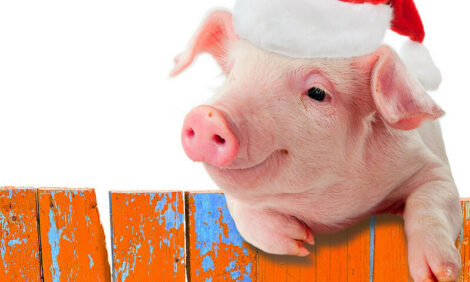



Brazilian Hog Market – July 2011
BRAZIL - Try as one may, it is difficult to get away from the roller coaster concept of the Brazilian pig market, writes Martin Riordan, Sales and Service at Genesus Brazil.Each time a new Brazilian Market Report has been prepared this year, prices have taken another wild swing. But at least this time, it is in the right direction!
A rapid rise in pig prices since the beginning of July, which has been seen to a greater or lesser extent across the country, indicates that a sudden shortage has developed. In part this shortage is due to producers cutting back on sow numbers over recent months as a reaction to heavy losses.
In São Paulo state, which is a thermometer of national supply and demand due to the large number of producers and smaller industries creating a competitive environment, prices have risen from about 2.10 real (BRR; US$1.34) per kg live weight near the end of June to the present price of BRR3.09 (US$1.97), a massive increase of 47 per cent. With such a big jump, São Paulo attracts pigs from other states, causing local shortages which force prices to rise.
A report from Mato Grosso state for 22 July mentions a price increase from a low of US$1.09 per kg live weight in May to this week's price of US$1.50, some 38 per cent more. Production costs are estimated at US$1.34, so producers are back in profit.
What has brought about this sudden turnaround in the market? As usual, nobody seems to be too sure and there are few reliable statistics on which to base an argument. However, some factors have certainly played a part:
- Many producers have reacted to the general crisis in the industry, which began with the financial crisis in October of 2008, by cutting back or stopping production. Thus the number of independent market pigs has certainly declined. In our region, which had hundreds of producers a couple of decades ago, it has now become difficult to buy a pig to roast for a barbecue as there are so few producers.
- The price of beef has risen firmly, getting back towards the high end-of-year prices. As beef is the meat of preference for the Brazilian barbecue, pork consumption rises to keep the cost within budget. So this will have the effect of increasing domestic demand.
- A famous national dish called feijoada uses several ingredients from the pig, including ribs, tails, ears, trotters, bacon and pieces of pork, all stewed slowly with black beans. And feijoada is a very popular dish when temperatures fall, particularly in the populous states of São Paulo and Rio de Janeiro. The month of June had several cold spells, with heavy frost in the South and temperatures below 10°C in the Southeast. Feijoada is not solely responsible for increased domestic demand: in general, pork consumption traditionally rises in Brazil as temperatures fall.
- The volume of pork exports in June bucked the monthly trend this year and, at 52,752 tonnes, was 12.35 per cent higher than that of June 2010. The increase in total value was 29.65 per cent. The accumulated export volume from January to May was down four per cent year-on-year. This reversal was greeted with surprise, as during June Russia announced that it was banning exports from more than 80 meat plants in Brazil, including many of the main pork-exporting plants. The reason given was the usual one, that the plants were not observing Russian health standards. However, it is generally taken that the reasons for the ban were more commercial than technical.
Also, the price of corn has dropped back slightly, around 10 per cent on a national average, reducing production costs. So, with higher prices for market hogs and lower production costs, for the first time in several months, many producers are now breaking even or making a small profit, a situation which has brought relief to those who have survived the recent crisis. The price of corn has normal regional variations in Brazil, due to differences in production and consumption. Current prices range from about US$7.55 per bushel in the southern region to US$4.58 in Mato Grosso in central Brazil. High transport costs and interstate taxes manage to maintain this difference.
Surviving producers are feeling relief but will be considering their future in the activity carefully. Recent years have seen long periods of crisis and short periods of relief, with a tendency to quickly reduce equity. After two years of study, the government monopoly body has finally approved the fusion of two of the biggest Brazilian pork industries, Perdigão and Sadia, with conditions attached. If the companies fulfill these conditions, they will trade as BR Foods, which will be a major player on the global food market. The trend towards consolidation and concentration among hog industries is bad news for independent producers who have less and less sales options, particularly in the South. This leads to price volatility and, in really bad moments, a total lack of hog buyers in some regions. This is the producer's worst nightmare, and thus many are reconsidering their future: cut back or abandon production, or seek a contractual arrangement with one of the industries to produce grower piglets.
| Genesus Global Market Report Prices for week of 25 July 2011 |
||
|---|---|---|
| Country | Domestic price (own currency) |
US$ (per pound liveweight) |
| USA (Iowa-Minnesota) | 99.68¢ US$/lb carcass |
73.76¢ |
| Canada (Ontario) | 1.78 C$/kg carcass |
64.90¢ |
| Mexico (DF) | 21.98 MXP/kg liveweight |
84.39¢ |
| Brazil (south region) | 2.54 BRR/kg liveweight |
73.50¢ |
| Russia | 95 RUB/kg liveweight |
$1.55 |
| China | 19.03 RMB/kg liveweight |
$1.33 |
| Spain | 1.27 €/kg liveweight |
82.12¢ |







